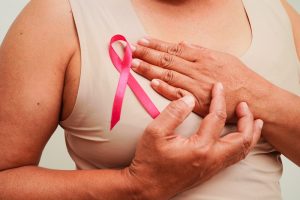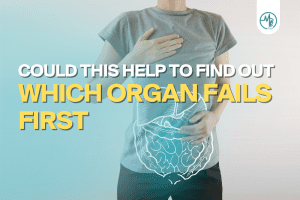The testes are a pair of organs in the human body located inside the scrotum-a loose bag of skin beneath the penis. They are reproductive organs that produce testosterone, a male sex hormone, and sperm. Although testicular cancer is rare, it is the most common cancer in American men between the ages of 15 and 35.
Epidemiology of testicular cancer
The incidence has increased over the past 30 to 40 years and it affects mainly Caucasian populations. Incidence rates among young white men in Nordic countries are ten times higher than those among black and Asian men. In children, the highest incidence rate is in Asia with 4.2 per million people and the lowest in Europe with 2.1 per million people.
Signs and Symptoms of testicular cancer
The signs and symptoms include:
- Presence of an abnormal mass in either testicle
- Feeling of heaviness in the scrotum due to an enlargement of the testes
- Pain in the abdomen or groin
- Collection of fluid in the scrotum
- Pain in one or both testicles or the scrotum
- Breast enlargement or tenderness
- Backache
Testicular cancer usually affects only one testicle and most patients present with a scrotal mass that is either painless or with a dull ache.
Risk Factors
The risk factors of testicular cancer are:
- An undescended testicle (cryptorchidism)
- Abnormality during the development of testes, such as Klinefelter syndrome
- Family history: The risk of developing testicular cancer is higher in first degree relatives of a patient as opposed to the general population
- Age: Men between the ages of 15 to 35 are at a higher risk
- Race: Caucasians are at a higher risk of developing testicular cancer than black men
- Environmental exposure: Exposure to diethylstilbestrol (DES) during pregnancy is associated with cryptorchidism in the foetus, and ultimately increases the risk of developing testicular cancer
Diagnosis
Testicular cancer is either discovered while an individual is conducting a self-examination for lumps or through a routine check-up by their physician.
Ultrasonography (USG)
This can determine the nature of any lumps in the testes, such as if they are solid or fluid-filled, and whether they are inside or outside the testicle.
Blood tests
Blood tests are done to detect serum levels of tumour markers. Tumour markers are normally present in the blood, and the levels of these substances may be elevated in particular types of cancer. Some common diagnostic tests are a complete blood count, serum alpha-fetoprotein, serum beta subunit of human chorionic gonadotropin (beta-hCG), and lactate dehydrogenase (LDH).
Histology
After a biopsy of an abnormal testicular mass is acquired, the sample is analysed to determine its malignancy and the type of cancer.
After a diagnosis is made, the next step is to determine the extent or stage of cancer. To determine whether the cancer has spread to other parts of the body, the following tests are done:
- Computerised tomography (CT) scan of the abdomen, chest, and pelvis.
- Blood tests to determine if elevated tumour markers persist in the blood after surgery. This indicates the persistence of cancer cells in the body despite removal of the testicles.
Treatment
Treatment depends on several factors, such as the type and stage of disease as well as the health and personal preferences of each patient.
Surgery
Surgery to remove the testicle is known as radical inguinal orchiectomy. This is the primary treatment for nearly all stages and types of testicular cancer. This surgery is done by making an incision in the groin and extracting the entire testicle through the opening. Surrounding lymph nodes (retroperitoneal lymph nodes) may also be removed through an abdominal incision.
Radiation therapy
During radiation therapy, high-powered energy beams, such as X-rays, are used to kill cancer cells. The patient is positioned on a table and a large machine is used to aim the energy beams at precise points on the body.
Some common side effects of radiation therapy may include nausea, fatigue, skin redness, and irritation in the abdominal and groin regions. Radiation therapy may temporarily reduce sperm count and result in reduced fertility in some men.
Chemotherapy
In chemotherapy, drugs are used to kill cancer cells and this can be done either before or after lymph node removal surgery, or on its own. The side effects of chemotherapy drugs depend on the specific drugs being used but include fatigue, nausea, hair loss, and an increased risk of infection.
Monitoring
Frequent monitoring of the patient is important to prevent future recurrences and complications. Patients have to follow up with clinical examinations and ultrasonography of the testes to check for any detectable masses.
CT scans of the abdominal and pelvic region should be performed at specified intervals to evaluate any recurrence, particularly in the retroperitoneal region.
Chest X-ray may be ordered if there is reason to suspect thoracic metastasis. In one study, 76% of stage I seminoma relapses occurred within the first two years.
Common sites of recurrence include retroperitoneally (85.7%), pelvic nodes, spermatic cord, mesentery, and lungs.
Complications
Recurrence of testicular cancer occurs in 1% to 2% of survivors.
Secondary malignancy: The cause of death in cancer survivors is mostly secondary malignancies. Reported secondary malignancies include leukaemia and solid cancers of the lungs, colon, bladder, pancreas, stomach, or oesophagus.
Conclusion
Testicular cancer is a highly treatable disease and recovery is possible even in patients with metastatic disease at diagnosis. According to Surveillance, Epidemiology, and End Results data from 2009-2015, the overall 5-year survival rate is 95.2%. However, the prognosis of testicular cancer depends on the type, stage, and other distinct features such as type of metastatic disease.












